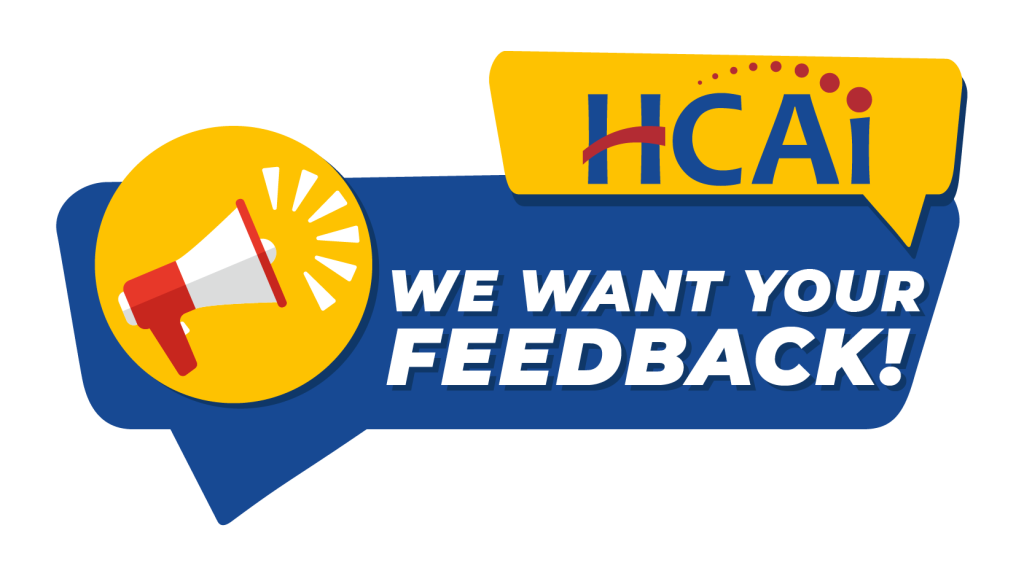Cost Transparency: Prescription Drugs (CTRx)
Monthly Updated Report Data Sets
The latest data sets of prescription drug cost transparency reports are available for download. The data sets are comprised of the reports submitted to the Department of Health Care Access and Information (HCAI).
Feedback
HCAI wants your feedback about how you are or are planning to use CTRx data and what you would like to see in the future from the CTRx Program. Share your feedback with HCAI staff by clicking the button below.
CTRx Program Overview
Program Operations
The HCAI Prescription Drug Cost Transparency Program, CTRx, provides transparency for the cost of prescription drugs in California. Per 127675 – 127686 of the Health and Safety Code, prescription drug manufacturers are required to submit specified reports to HCAI:
- Reports to HCAI of specified wholesale acquisition cost (WAC) increases and related information on a quarterly basis
- 3-day notices to HCAI of specified new drugs being introduced to the California market
- Reports to HCAI of information related to specified new drugs being introduced to the California market.
CTRx works with drug manufacturers to ensure submissions are accurate and comply with reporting requirements. For more detailed information on the types of reports submitted to HCAI, see here.
Note: Prescription drug manufacturers are also required to provide 60-day advance notices of specified WAC increases to registered, qualified purchasers. CTRx provides online a downloadable list of registered, purchasers and their contact information for manufacturers to use. For more information on purchasers and the 60-day advance notice, visit the purchasers page.
CTRx staff are available to provide program support from 8am to 5pm PT/PDT, Monday through Friday, with the exception of state holidays.
The CTRx program can be reached at ctrx@hcai.ca.gov.
To receive regular informational updates about the program, subscribe to the CTRx mailing list.
Legal Framework
California Health and Safety Code (HSC) §§ 127675 – 127686 (Division 107, Part 2, Chapter 9)
Senate Bill (SB) 17 was enacted on October 9, 2017, with the relevant provisions captured in §§127675 – 127686 of the Health and Safety Code . The statute established the reporting requirements of prescription drug manufacturers to HCAI and purchasers.
The law also includes separate provisions that are implemented by the Department of Managed Health Care and the California Department of Insurance.
January 1, 2018, HCAI makes available a registry of public and private purchasers for purposes of the 60-day advance notice requirement for specified increases in the wholesale acquisition cost of a prescription drug. Public and private purchasers may register with HCAI beginning December 1, 2017 on this website.
January 1, 2019, regulations were adopted.
January 1, 2019, drug manufacturers must notify HCAI within three days of introducing a new drug at a wholesale acquisition cost that exceeds the specified threshold. Within 30 days of this notification, manufacturers must submit additional information to HCAI. HCAI will publish this information on its website quarterly.
After January 1, 2019, drug manufacturers are required to submit to HCAI information on the rationale for cost increases for existing drugs that fall under the reporting requirement. HCAI will collect this information beginning April 2019 and publish on its website within 60 days of receipt from each manufacturer on a quarterly basis.
Read the Data Submitter Workshop Presentation
Read the Data User Workshop Presentation
Read the Data User Workshop Summary
Notice of Approval of Regulatory Action (OAL File No. 2023-1113-01S)
April 1, 2024, revisions to the CTRx Program regulations take effect providing clarity to prescription drug manufacturers regarding reporting requirements.
FAQs
What is wholesale acquisition cost (WAC)?
Wholesale Acquisition Cost (WAC) is defined in the U.S. Code as “…the manufacturer’s list price for [a] drug or biological to wholesalers or direct purchasers in the United States, not including prompt pay or other discounts, rebates or reductions in price…”
Does the law cover all prescription drugs?
No. The law only pertains to human prescription drugs that are marketed and sold in California, regardless of a drug’s location of manufacture, packaging, or wholesale distribution. Radiologicals, active pharmaceutical ingredients (API’s), and compounded prescriptions drugs are excluded from the reporting requirements.
Prescription drugs sold in medical delivery devices (e.g., syringes, injection pens, and transdermal patches) are subject to reporting. Medical delivery devices sold without a prescription drug included are not subject to reporting.
Where can I get copies of the 60-day advance notices of WAC increases?
Manufacturers send the 60-day advance notices of WAC increases directly to purchasers. HCAI makes available a list of purchasers who are eligible and have registered to be on the list.
The purchasers page provides more detailed definitions of the types of eligible purchasers.
Additional Resources
FDA-Approved Drugs
U.S. Food & Drug Administration (FDA) approval information of prescription drugs can be found on the drug database located on the Drugs@FDA site that is maintained by the FDA .
Prescription Drug Annual Reports
In addition to the quarterly reports HCAI collects to increase prescription drug cost transparency, SB 17 requires the Department of Managed Healthcare and California Department of Insurance to compile and publish annual reports with data from health plans and health insurers, containing the following information by October 1, 2018 and annually thereafter:
- 25 most frequently prescribed drugs
- 25 most costly drugs by total annual plan spending
- 25 drugs with the highest year-over-year increase in total plan spending
- Other aggregate data on the impact of drug costs to large group health care plans and health insurance policies
National Academy for State Health Policy (NASHP)
The National Academy for State Health Policy is a nonpartisan forum of policymakers throughout state governments, learning, leading and implementing innovative solutions to health policy challenges.
California State Library – California Research Bureau Report
Prescription Drug Pricing and Cost Transparency in California – October 2022


